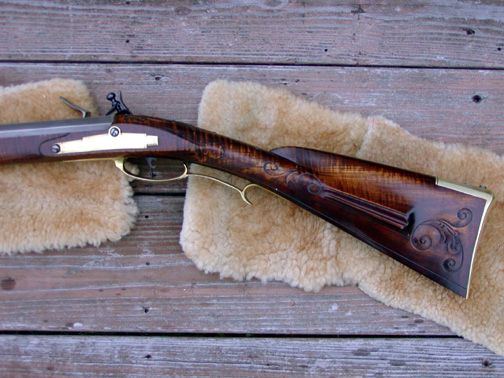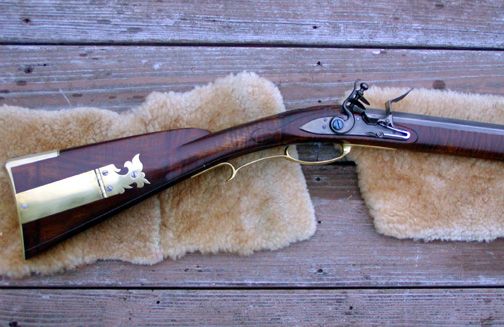So, I have a Pedersoli Bess. It's straight from the factory, modern looking stock, armory bright, what you see at Canelas, pretty much.
Now that my extra moccasins are made and haversack patched up, etc, I'm considering dressing up the Bess. Mainly, I want to use some walnut stain on the stock. I'm on the fence about doing anything with the barrel, because I know it's a heck of a lot harder to go back to armory bright than it is to get rid of it haha.
So, with the collective experience of this crowd, I am wondering what you talented gentlemen would do if you had a factory Bess that you wanted to make look less like it came from a factory. What materials (strippers, stains, oil finishes, etc.) would you prefer to use? What would you absolutely not do?
The ultimate goal of any refinishing I'd do would be to make it something closer to what was seen in history. I'm not nearly skilled enough to change any of the hardware though.
Anyway, what do you all think? Mainly just getting opinions, possibly examples, musing a bit.
Hope your winter projects are going well!
Now that my extra moccasins are made and haversack patched up, etc, I'm considering dressing up the Bess. Mainly, I want to use some walnut stain on the stock. I'm on the fence about doing anything with the barrel, because I know it's a heck of a lot harder to go back to armory bright than it is to get rid of it haha.
So, with the collective experience of this crowd, I am wondering what you talented gentlemen would do if you had a factory Bess that you wanted to make look less like it came from a factory. What materials (strippers, stains, oil finishes, etc.) would you prefer to use? What would you absolutely not do?
The ultimate goal of any refinishing I'd do would be to make it something closer to what was seen in history. I'm not nearly skilled enough to change any of the hardware though.
Anyway, what do you all think? Mainly just getting opinions, possibly examples, musing a bit.
Hope your winter projects are going well!






